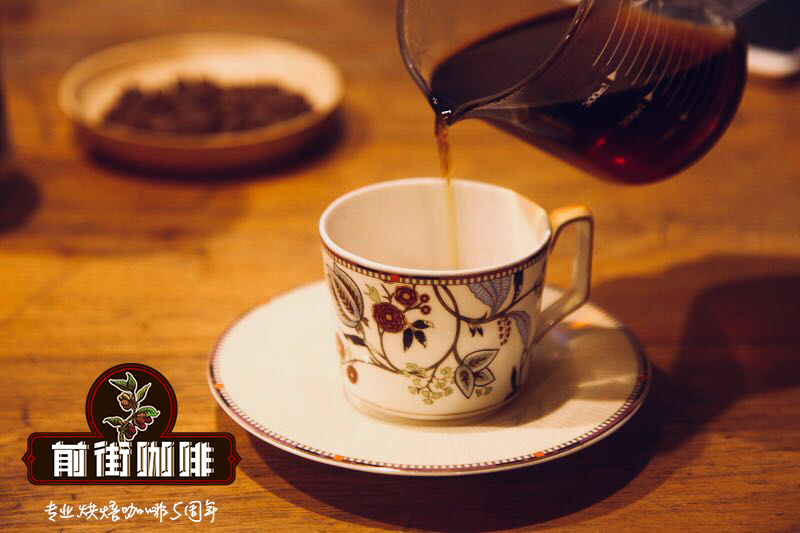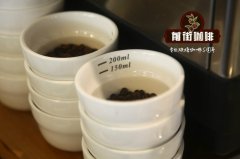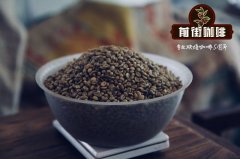The western valley of Costa Rica? the flavor of Kaduai red honey treatment at the Hills of St. Louis?

Professional coffee knowledge exchange more coffee bean information please follow the coffee workshop (Wechat official account cafe_style)
The western valley of Costa Rica? the flavor of Kaduai red honey treatment at the Hills of St. Louis?
The seven main coffee producing areas in Costa Rica are distributed along the inland central plateau from northwest to southeast. Costa Rican volcanic terrain with fertile volcanic ash, mild and suitable temperature, and stable and abundant rainfall is one of the reasons why coffee has become one of the main agricultural products in Costa Rica. As the coffee industry in Costa Rica began to develop since the middle of the 18th century, it was the first country where coffee was first introduced into Central America and has a long history, so the coffee organization has a complete system from production to marketing. In terms of quality and quantity, Costa Rican coffee has always been recognized by the world, and has been rated as the world-class high-quality coffee.
Alexander Delgado, the owner of the St. Louis Hill microprocessing plant at an altitude of 1600 meters, won international attention in the Costa Rican Excellence Cup from 2011 to 2013. His unique "honey treatment" saves a lot of water resources in the whole process of handling coffee beans, which is not only better for the environment, but also adds more flavor complexity to the cup test. Mr. Delgado has also implemented some innovative drying techniques, using the so-called "bunk beds" to dry coffee.
This drying method puts the coffee beans into a "stressless" state. Only wind and longer drying time are used to slowly reduce the moisture and water activity of coffee to acceptable levels. The experimental Mr. Delgado is full of diversity in drying and processing techniques, and grows a large number of different varieties of coffee on the 4-hectare estate, including Catua í, Caturra, Villa Sarch í, Geisha, SL-28 and Villalobos varieties. Their hope is to one day produce the best coffee in Costa Rica.
This time the border baked is red honey-treated Catuai, with fresh herbal aroma, honey texture, apple acidity, hazelnut sweet flavor, full of hierarchical changes.
Producing area: Western valley
Production: the Hills of St. Louis
Variety: Kaduai species
Altitude: 1350m
Treatment: red honey treatment
Red honey treatment: about 50% of the pectin layer is retained, and the drying time of raw coffee beans is 2-3 weeks, usually due to weather or placed in the dark. If the weather is clear, the grower should block part of the sun to reduce the sunshine time. Rich fruit sweet aroma, sweet and sour thick and bright, full and solid taste.
Flavor description: fresh herbal aroma, honey texture, sweet apple taste, hazelnut and English cream paste sweet flavor covering the tongue, the finish also has a good citrus and grapefruit sweet and sour taste, hierarchical changes.
Qianjie recommended cooking:
Filter cup: Hario V60
Water temperature: 90 degrees
Degree of grinding: small Fuji 3.5
Cooking methods: the ratio of water to powder is 1:15, 15g powder, the first injection of 25g water, 25 s steaming, the second injection to 120g water cut off, waiting for the powder bed water to half and then water injection, slow water injection until 225g water, extraction time about 2:00
Analysis: using three-stage brewing to clarify the flavor of the front, middle and back of the coffee. Because the V60 has many ribs and the drainage speed is fast, it can prolong the extraction time when the water is cut off.
Important Notice :
前街咖啡 FrontStreet Coffee has moved to new addredd:
FrontStreet Coffee Address: 315,Donghua East Road,GuangZhou
Tel:020 38364473
- Prev

Kafa Forest, Ethiopia | Wind of native species of Agaro Agaro G1 Bitugudina
Professional coffee knowledge exchange more coffee bean information please follow the coffee workshop (Wechat official account cafe_style) Ethiopia Kafa Forest | washed Agaro Agaro G1 than Tugudina native species flavor? Ethiopia's coffee flavor is very diverse, different soil types, microclimate and countless native coffee species, resulting in the coffee produced by each town
- Next

Costa Rican Tarazu La Pira Estate Pila Manor Tibica seed washing treatment
Professional coffee knowledge exchange more coffee bean information please follow the coffee workshop (Wechat official account cafe_style) Costa Rica Tarazu | La Pira Estate Pila Manor Tibika washing method of the flavor? Named after the nickname PIRO of Gilberto Urena, the father of Carlos Carlos, Pilar Manor has a history of 50 years. After inheriting the family farm, Carlos
Related
- Detailed explanation of Jadeite planting Land in Panamanian Jadeite Manor introduction to the grading system of Jadeite competitive bidding, Red bid, Green bid and Rose Summer
- Story of Coffee planting in Brenka region of Costa Rica Stonehenge Manor anaerobic heavy honey treatment of flavor mouth
- What's on the barrel of Blue Mountain Coffee beans?
- Can American coffee also pull flowers? How to use hot American style to pull out a good-looking pattern?
- Can you make a cold extract with coffee beans? What is the right proportion for cold-extracted coffee formula?
- Indonesian PWN Gold Mandrine Coffee Origin Features Flavor How to Chong? Mandolin coffee is American.
- A brief introduction to the flavor characteristics of Brazilian yellow bourbon coffee beans
- What is the effect of different water quality on the flavor of cold-extracted coffee? What kind of water is best for brewing coffee?
- Why do you think of Rose Summer whenever you mention Panamanian coffee?
- Introduction to the characteristics of authentic blue mountain coffee bean producing areas? What is the CIB Coffee Authority in Jamaica?

